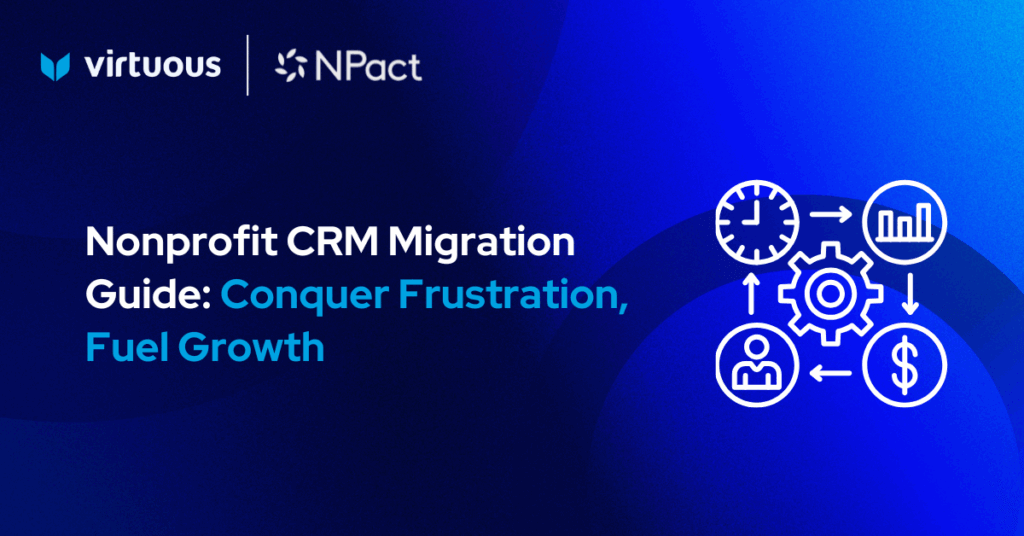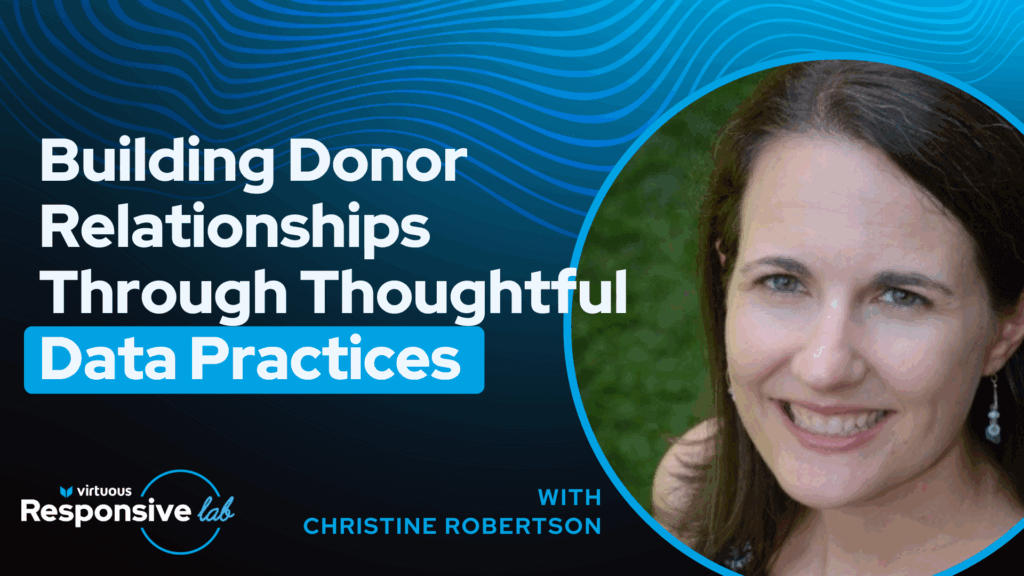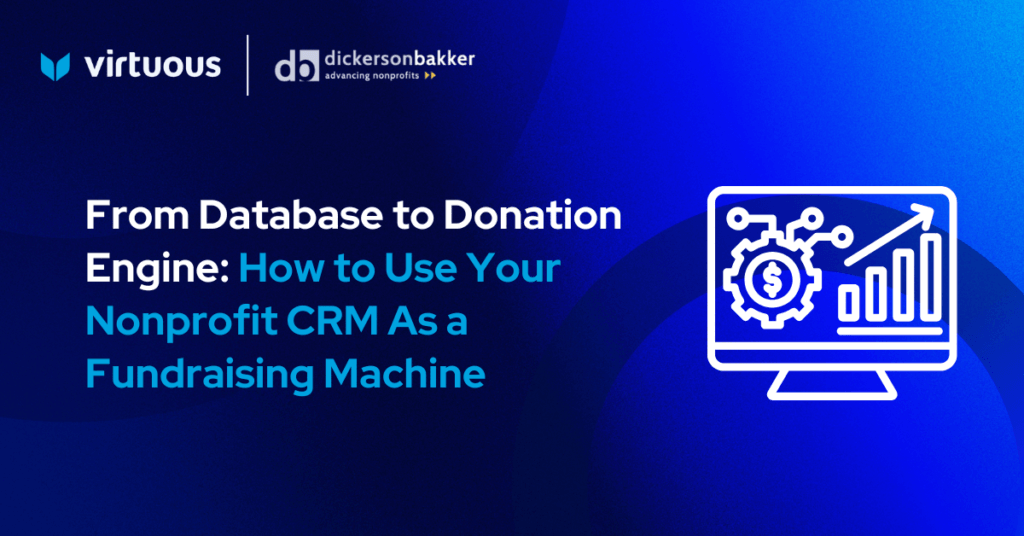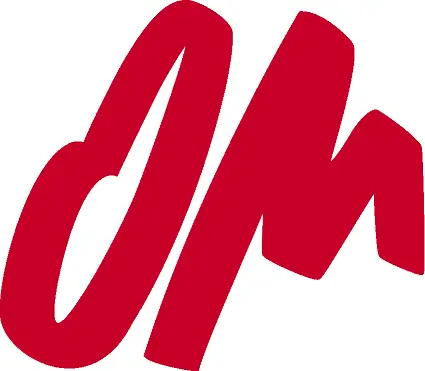Donor segmentation can help you better connect with supporters. Responsive donor segmentation can help you unlock behavioral insights that deepen engagement with donors. Read on to learn how to leverage these insights to cultivate more meaningful donor relationships.
Donor segmentation is the key to fostering more personal interactions with supporters. Too often, though, nonprofits underutilize their data analytics, missing out on opportunities to segment their supporters more deeply.
In this attention economy, multiple forces are vying for your donor’s attention. Just to name a few: other charitable causes, promotions from consumer brands, and invitations to upcoming milestone celebrations.
You’re competing with several external factors, and your supporters are simply trying to cut through the clutter of their inboxes. As a result, generic, mass-communication-style emails risk getting lost in the shuffle and end up in the junk folder.
However, segmenting by donation history is just the start and might not resonate as much as you think. If your engagement metrics are lackluster, it’s a good time to test out other segmentation practices.
Responsive Donor Segmentation Explained
Responsive donor segmentation cultivates more personalized interactions with supporters. Building on the principles of the responsive fundraising framework, you’re creating communication pathways that respond to actions a supporter takes.
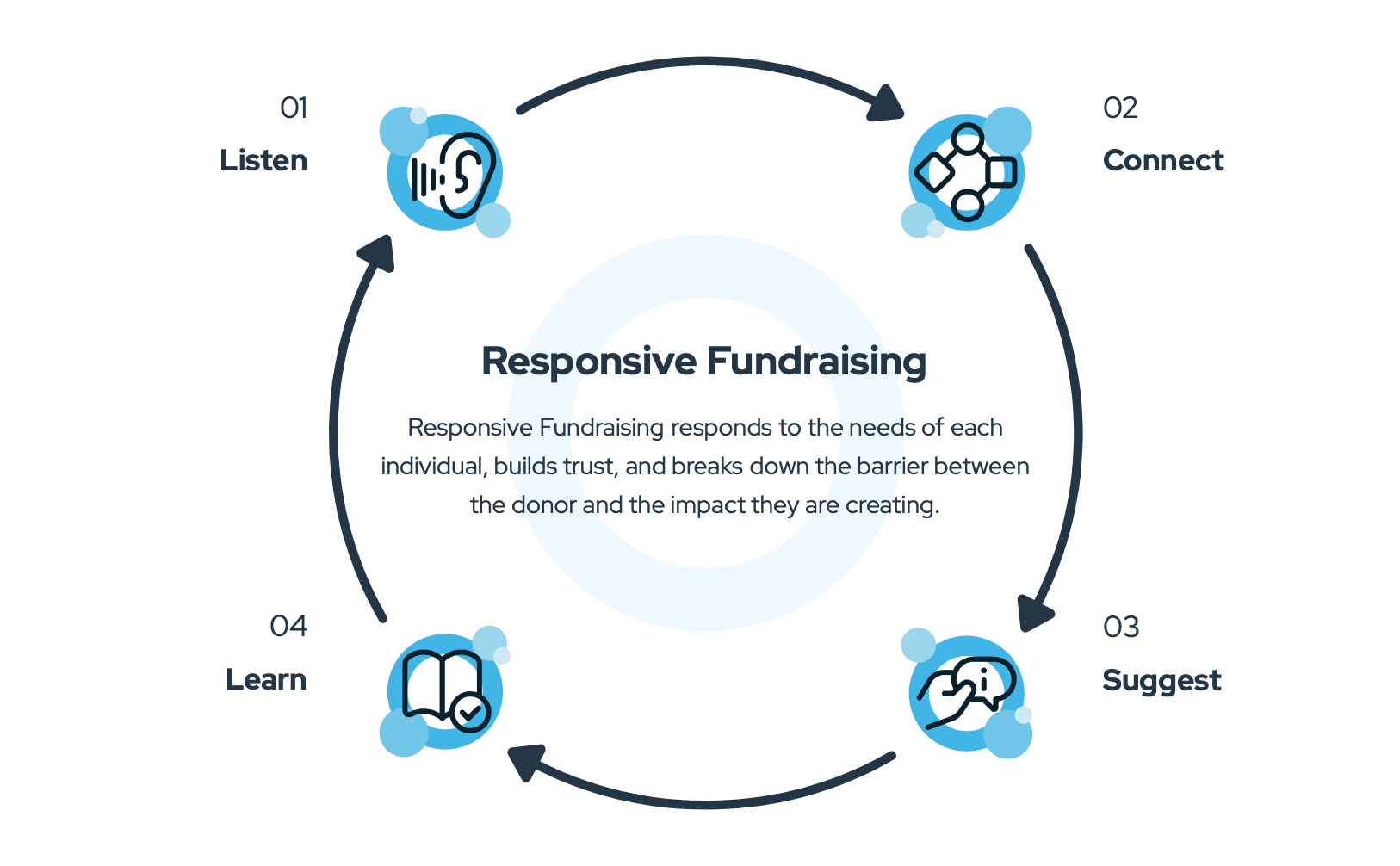
Taking into account these donor signals in your segmentation strategy ensures that each individual receives messages that resonate with their interests and motivations. This is where donor personas make an impactful difference. By strategically segmenting your donor base according to certain common characteristics—aka donor personas—you can effectively cut through the noise and capture the attention of the right people.
“We recommend starting with three to five personas if you haven’t done this in the past. If you overthink it too much, you end up with 20 different personas. It gets hard gathering up the content that’s specific to each one. Starting with three to five and building from there is usually the best way to go,” Gabe Cooper, CEO of Virtuous, explains in a webinar on the responsive maturity model.
For example, let’s say Rebecca volunteers at your soup kitchen twice a month. She really wants to take an active role in making a difference in her local community. However, although she’s actively involved in your cause, she has yet to make a donation. With this behavioral insight in mind, you can segment her into a non-donor group focused on community engagement.
Then, you can tailor communications to highlight volunteer future opportunities, stories of how her volunteer time changed lives, and other ways she can support your cause—like attending an upcoming fundraising event or becoming a monthly donor.
Better Donor Segmentation Starts With a Responsive Nonprofit CRM
However, getting more nuanced with donor segmentation hinges on a nonprofit CRM that not only collects data efficiently but also transforms it into actionable insights.
With a responsive CRM like Virtuous, nonprofits can track donor engagement across multiple touchpoints, including email opens, website visits, event attendance, and donation history. This allows organizations like Heidi’s Village to create more detailed donor profiles.
“I’m focusing on donors that have hit certain milestones. We’ve started to create a story around closing the loop for our donors. Now we can send emails with specific information and how that relates to our cause,” Lisa Evans Johnson, CFRE, Chief of Staff at Heidi’s Village.
Cultivate Meaningful Relationships Through Hyper-Personalized Donor Segmentation
With more granular visibility into donor behavior, preferences, and affinities via a responsive CRM for nonprofits, organizations can craft targeted communication strategies that resonate with each supporter on a more personal level.
Let’s examine a few CRM features that will help you segment better and optimize staff workflows.
Custom Fields
Custom fields are especially useful for tracking more nuanced information that is unique to your mission, like interested cause areas, preferred giving methods, or employer information for corporate matching-gift programs.
With custom fields, nonprofits create more tailored segments that speak to the supporter on a more personal level. For example, if a nonprofit knows that a group of donors is particularly passionate about environmental causes, it can create a custom field to tag these donors accordingly.
Similarly, Norwescap takes advantage of merge tags to include detailed information about each supporter, like date of last gift.
“We used merge tags to include the date of when their last gift was given to help personalize it further. By including their last gift date, we were able to then include some of the things that we’ve been able to achieve since their last gift, and invite them to make another gift to keep the work moving forward,” says Heather Thompson, Chief Development Officer at Norwescap.
Thanks to the thoughtful segmentation tools from Virtuous, Norwescap has witnessed a higher amount of lapsed donors give and begin to re-engage with their mission once more.
Automated Tagging
By auto-assigning tags to donors based on predefined rules or triggers, nonprofits can ensure consistent and accurate segmentation. This feature allows organizations to identify and group donors according to various attributes, such as donation frequency, campaign engagement, event attendance, or volunteer participation, without manual entry.
Automated tagging also facilitates real-time tracking of donor interactions and behaviors, enabling nonprofits to respond promptly and appropriately with personalized communications.
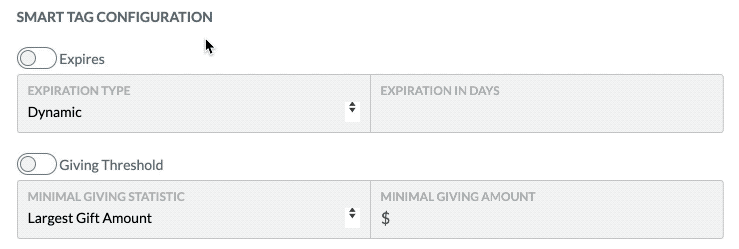
Dashboard Insights
With access to real-time CRM analytics and insights, nonprofits can easily identify high-value donors, detect trends in donor behavior, and tailor personalized communication strategies to different donor segments.
With Virtuous’ responsive dashboard insights, nonprofits can monitor their segmentation efforts in real-time and improve their strategies over time based on performance metrics. This helps you find the gaps and opportunities in your communication, ensuring a responsive approach based on the actions, or lack of actions, a supporter takes.
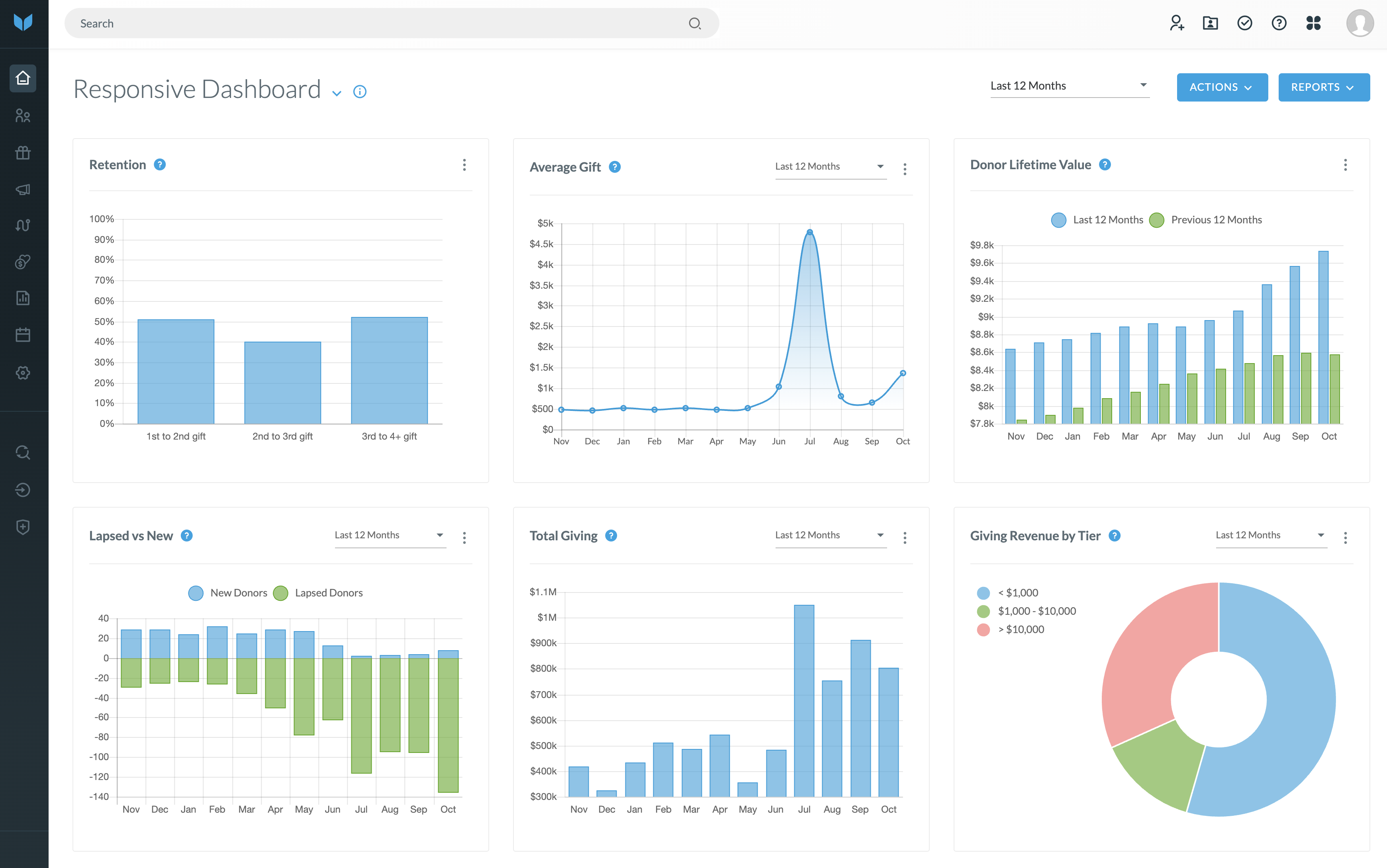
Holistic Integration
By integrating data from multiple sources, such as email marketing platforms, fundraising software, event management systems, and social media channels, nonprofits can eliminate data silos and gain a 360-degree understanding of donor interactions and engagement across all touchpoints.
This unified view enables nonprofits to track donor journeys more effectively, identify patterns and trends, and tailor their outreach strategies accordingly.
Organizations like The Freedom Story rely on their responsive nonprofit CRM to consolidate donor information across platforms into one place. This empowers the team to make more informed decisions about how to engage supporters through their communications.
“Virtuous has been extremely helpful for our organization. It allows us to pull reports and data on donors very easily and allows us to send out automated emails and see insights and feedback. That has allowed us to grow our organization organically and know what our donors respond to,” says Alaynah Morrow, US Operations Manager of The Freedom Story.
Marketing Automation
Marketing automation for nonprofits enables organizations to deliver tailored messages to different donor segments at the right time and through the right channels. That way, donors receive relevant and timely communications that resonate with their interests and preferences, leading to higher engagement and retention rates. This can look like a new donor welcome series, gift acknowledgment campaign, or educational series.
Another benefit of CRM automation is that it streamlines the donor communication workflow by automating repetitive tasks such as email scheduling, follow-ups, and personalized impact reporting. Virtuous empowers organizations like Charlotte Rescue Mission to create dynamic donor lifecycles that trigger automatically in the background while delivering personalized experiences to supporters.
“It’s all about creating connections. Everyone that completes a first-time donation receives a series of three emails that helps educate them and gives us a chance to talk more about our programs,” says Lea Love, Manager of Development Operations at Charlotte Rescue Mission.
How to Leverage Behavioral Insights From Responsive Donor Segmentation
The behavioral insights retrieved from your responsive nonprofit CRM allow you to get more in the weeds with your segmentation. When you’re able to address donors individually—acknowledging their cause affinity areas, past giving history, or preferred channels—you’re more likely to trigger an emotional response to your communications.
Think of it as when someone you just met remembers a personal detail about you—like an upcoming birthday or your plans to attend an upcoming charity drive. This thoughtful gesture makes you feel appreciated, thus encouraging you to continue building the relationship with that person.
Similarly, nonprofits can tailor their communication strategies, fundraising appeals, and stewardship efforts to meet the specific needs and interests of each donor segment, resulting in more personalized and meaningful interactions.
By continuously monitoring and analyzing donor behavior, nonprofits can identify trends, patterns, and opportunities for engagement, enabling them to refine their segmentation strategies and optimize their fundraising efforts for greater impact.
Next Step: Build Dynamic Campaigns
To help you become a more responsive nonprofit, we’ve adopted a maturity model framework, a step-by-step guide often used by organizations to benchmark their current level of maturity against industry best practices.
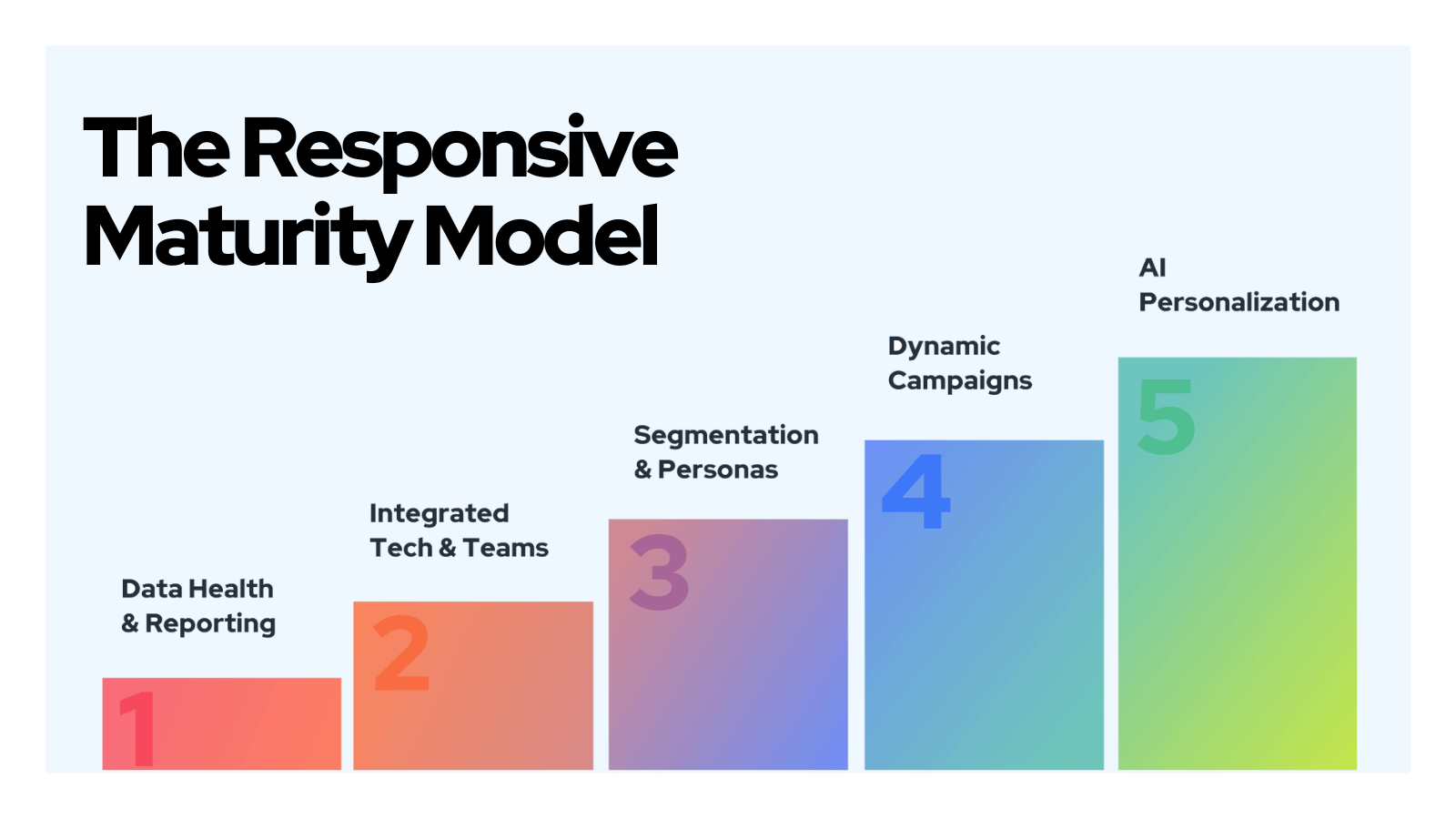
As you progress across each step, you’ll see increased team effectiveness, increased donor retention and gift size, decreased staff burnout, improved advocacy, and improved donor acquisition metrics.
Download The Responsive Maturity Model: 5 Building Blocks to Drive Increased Generosity to learn the five building blocks of responsive fundraising.

